The closure of any games developer is both regretful and telling. In an era where video games are becoming more and more accepted by mainstream society, the news of one shutting its doors is distressing. With the popularity of gaming on the rise, shouldn’t these developers flourish?
As of April 3rd 2013, one of the biggest names in the gaming industry—LucasArts—is no more. Rather, it won’t be creating games anymore. The studio’s staff of 150 were laid off and its new parent company, Disney, is using the name LucasArts as a licensing firm—so that third party companies can create games having to do with Star Wars, Indiana Jones and so on.
Although the studio was never as large or successful as say, Electronic Arts, it will always be remembered as one of the pioneers of modern video gaming. Out of respect for LucasArts’ brilliant minds and people, we at inMotion Gaming have compiled a list of some of our favorite games to ever be developed and/or published by this truly legendary studio.
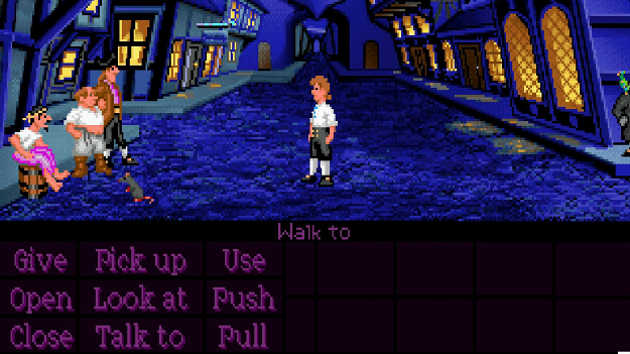
When it comes to point-and-click adventure games you could easily make a strong argument for LucasArts as the be-all-end-all when it comes to developing the best of them. Nothing could be truer of this than the Monkey Island games; the first of which, ‘The Secret of Monkey Island’ has to be my favourite.
Monkey Island is a game with wit; its humour is a wonderful blend of deadpan comedy and outlandish situations that go together so well with its characters that seem so blissfully un aware of the idiotic of the world they inhabit.
It has truly earned its place in the nostalgic memories of the older gamers who originally played it and has been discovered by a new generation thanks to its HD revival. Perhaps its biggest strength is that you can talk about how much fun it still is to play without needing to ever spoil the plot, which I’ll summarise for those who’ve yet to experience this marvel.
You are Guybrush Threepwood, a wanna-be mighty pirate, who to become a full pirate has to undertake several trials. Things get out of hand when he falls in love with Governor Elaine Marley, who’s quickly kidnapped by a ghost pirate. Guybrush then embarks on a high-stakes rescue mission to save his love.
Play it for yourself and maybe 20 years on you’ll still remember how you wanted to be a mighty pirate, too.
-David Wyatt, Video Features
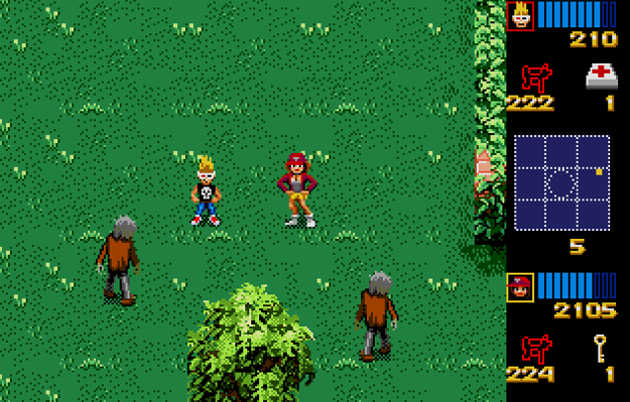
This gem of a game defined multiplayer for me as a child. In a game which was as weird as it was challenging, having a buddy blast zombies with waterguns with me was truly a childhood memory I’ll never forget.
Zombies Ate My Neighbors was released on the Super Nintendo and Sega Genesis in 1993. It was developed by LucasArts and published by Konami. For those who have never played it, I highly recommend that you do. The game is best described as a zany top-down shooter overflowing with personality.
The game had you control either Zeke or Julie—or both, in multiplayer—as they struggle to fight hordes of demons invading their neighborhood. That is basically the extent of the story. There’s no mythical blade to collect, no ancient demon come to life—just two kids, miles of zombies, and enough weaponry to rival that of the Worms games.
On their quest to rid their neighborhood and the rest of the world from the clutches of evil, Zeke and/or Julie must rescue at least one civilian per level. With 48 regular missions and 7 bonus levels, Zombies Ate My Neighbors lasted a good long while. Grabbing a buddy to play the game’s 2-player mode with is encouraged, as the game gets incredibly hard towards the end, in true Super Nintendo action game fashion.
I think that the kind of spunk Zombies bore defined gaming in the mid-90s. It was weird, yeah, but it was also really fun and very unique. Zombies Ate My Neighbors is fondly remembered by those who played (and were terrified by) it in their childhood. It had a sequel, entitled Ghoul Patrol, but that ended up how most sequels do—not nearly as good as the first.
-Chris Carlson, Editor
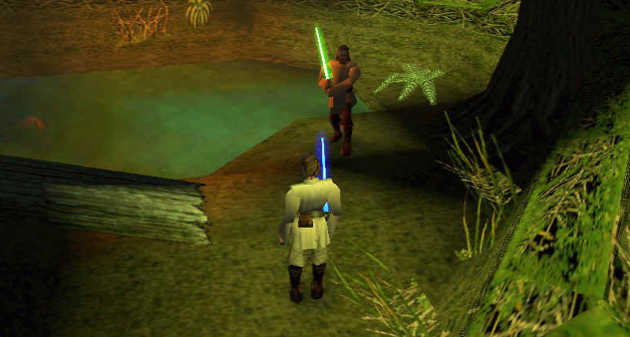
When I was a mere 8 year old lad I wasn’t lucky enough to have my very own PlayStation. We had a PC and an old Saga Mega Drive but the ‘new generation of console’ wasn’t on the top of my Christmas list back in 1999. As a young boy I had always been fascinated by the Star Wars franchise; to be honest, I liked the lightsabers. So, when I stepped into the kids play area of my local restaurant after a lovely meal I was, understandably, drawn towards the PlayStation in the corner of the room. The PlayStation was neglected as the other children opted for the climbing frames and foam swords. I, however, was enticed by the look of the game loaded on the console – Star Wars Episode I: The Phantom Menace.
Developed by the short-lived Big Ape Productions and published by LucasArts, the game itself was incredibly detailed for its time. The graphics seemed smooth, the game play was quick, responsive and exciting. It goes without saying that attempting to play the game now would probably give me a headache but, at the time, I was captivated. I played for a good hour, slowly drawing a small crowd to watch my slightly pixelated adventure unfold. Sadly, I had to leave the quest unfinished as I was eventually torn away from the screen by my parents. However, after a few months of patiently waiting, my parents eventually bought me my very own PlayStation with a new copy of the game.
It was LucasArts that introduced me to the joys of console gaming. The Phantom Menace still is one of my favorite games. I am sad to see LucasArts go; it’s a loss to the gaming world indeed.
-Alec Ward, Assoc. Writer

Star Wars Galaxies was developed by Sony Online Entertainment and published by LucasArts on June 26, 2003. Its servers were online until December 15, 2011. For seven and a half years, the game captivated subscribers like me with its limitless options and paths for players to pursue. You could be a gunslinger of many varieties, such as a marksman, or a pistoleer. “But wait,” a lot of gamers might say, “that sounds like every other sci-fi MMO ever made!” Au contraire, ladies and gentlemen.
Where SWG broke the mold was with its introduction of noncombat classes. You see, players could decide to be artisans. But within that path, they could also choose to focus on tailoring, droid building, gunsmithing, armorsmithing, mining, architecture, furniture, medical supplies…the list goes on and on.
And if that didn’t strike your fancy, but you still wanted to skip the nitty-gritty of combat, then you could take up the role of Medic. When players died, they accrued “wounds,” limits placed on their three status bars (Health, Action and Mind) that could only be healed by Doctors (Health and Action) and Entertainers (Mind).
While the game went through multiple redesigns and eventually suffered the fate of many an ailing MMO by turning into what was essentially World of Warcraft with Star Wars textures, it maintained a strong, loyal community that loved it to the very, very end. I played it from release to shutdown, and it provided me with many of my very favorite memories of gaming, and helped me develop friendships that I continue to maintain now.
The closing of LucasArts is like a pinch of salt dropped onto the wound left by SWG’s server shutdown last December. Knowing I may never again have an experience like the ones I had in SWG is a hard thought to bear, and I tip my hat in the memory of LucasArts as an oft-troubled, yet doggedly determined presence in the gaming industry.
-Will Brunelle, Assoc. Writer
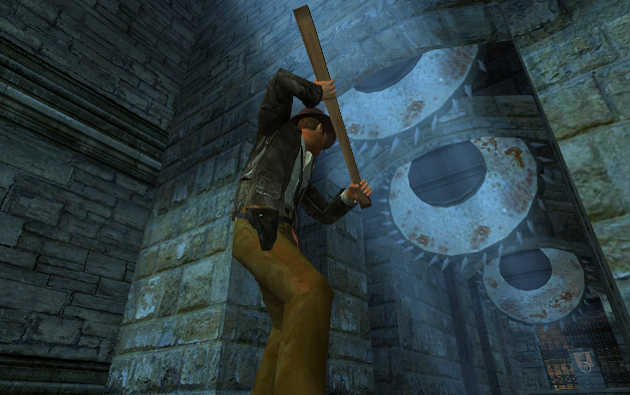
Sure, it wasn’t the greatest Indy game to ever grace our consoles, but let me tell you—she’ll fool ya. Indiana Jones and the Emperor’s Tomb was a great game, even if it wasn’t a ‘great’ game. Emperor’s Tomb was developed by The Collective and published by LucasArts in 2003. Featuring several long levels and a surprisingly good Harrison Ford impersonator, Emperor’s Tomb did its best to capture all the adventure and suspense that is Indiana Jones.
And it achieved that, for the most part. The story was excellent, and the game leads right in to the classic movie Indiana Jones and the Temple of Doom. The levels were partially interactive, as Indy could bash enemies with whatever he could find—chairs, barrels, and so on. Unfortunately, the game was weighted down by poor controls and an even worse camera system. One level—the clock tower in Prague, for those who’ve played it—was a notoriously hard challenge due to the lackluster camera angles the game presented.
I remember Emperor’s Tomb so well because it took my best friend and I years to finish. Part of that was due to the aforementioned clock tower level, part due to conflicting schedules as we entered our college years. Even today, we’ll occasionally call each other up to talk about how much we hated—yet loved—that damn game.
-Chris Carlson, Editor
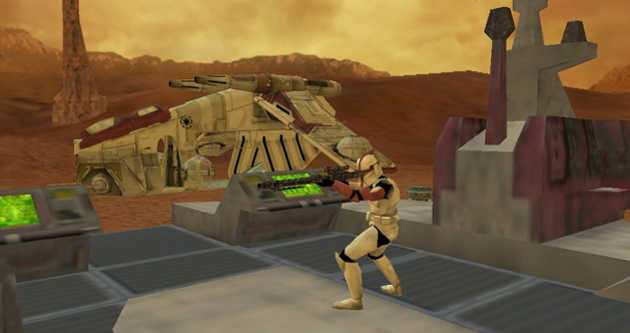
In a time when the only games I had known were Ratchet & Clank, Need For Speed, and a handful of other games of similar styles, Star Wars: Battlefront was very refreshing. Not only was this little gem my first shooter, but it also introduced me to the idea of using strategy in any game I’ve played since. Hearing my friends talk about blasting droids to a million pieces, fighting for command posts, and zipping through the battlefield on Speederbikes instantly had me intrigued. LucasArts and developer Pandemic did something that is a rare find indeed in the gaming world; they made a great licensed game.
Frankly, Battlefront wouldn’t have been nearly as great if it weren’t for the Star Wars title and setting. It was splendid for a Star Wars fan such as myself to explore the popular worlds and battlefields from the movies. Half the fun was just walking around taking in the sights as the sounds of battle echoed in the distance. Back then, that was the ultimate shooter experience for me. I set the camera to first-person and went to town with my blaster rifle. After all these years of playing Halo, Call of Duty, and all the other more refined shooters, Battlefront didn’t age very well. However, the nostalgia never fails to wash over me when I pop that disc into my Playstation 2. I have LucasArts to thank for the memories, and for the game itself, and I’ll never forget that. You will be missed LucasArts. May the Force be with you… always.
-Jonathan Gipson, Assoc. Writer
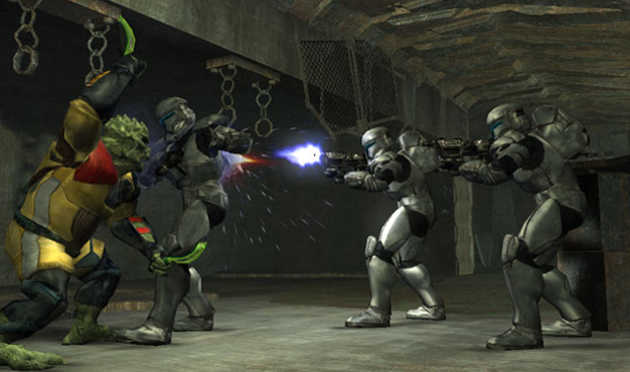
Developed and published by LucasArts, Star Wars: Republic Commando is an oddity in the Star Wars game library. It mirrors the experience of playing a modern Call of Duty or Battlefield entry, but covered in the livery of the Star Wars universe we all know and love. Rather than having you jump around with lightsaber(s) drawn and chairs being Force-thrown every which way, LucasArts threw you into the boots of RC-1138, “Boss,” as he leads his team of three fellow Republic Commandos on covert assignments to sabotage the Separatist’s campaign.
The game was gritty, visceral, and challenging. Enemies spurted blood onto your visor when you took them down with your wrist-mounted knife, and shootouts were intense, forcing you into cover and testing your ability to deploy your squadmates effectively and tactically.
By the end of the narrative, I found myself attached to my teammates, laughing at Scorch’s jokes and Sev’s dark, deadpan sarcasm. I cared about the outcome of my team’s efforts. I would throw myself into harm’s way if I saw a team member being outgunned, and consciously tried to protect them (something I don’t bother to do in Call of Duty, that’s for sure).
Republic Commando offered some of the most compelling FPS gameplay in a while, and it remains in my memory today as an example of how both a Star Wars game and an FPS in general should be made. I’m sad to see its creators close their doors, and I only hope that some other developer will pick up the reigns in the future and carry on the legacy of such great games.
-Will Brunelle, Assoc. Writer
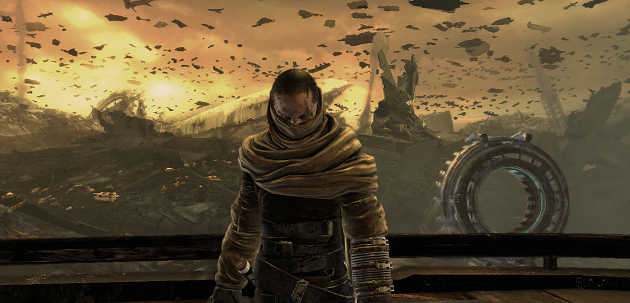
I think LucasArts will mostly be remembered for its Star Wars games in the same way that any branding of a Lucas-owned company will be mostly related to Star Wars. Skywalker Sound was a nice name variation at least. For me the fondest game I have in memory that came from them was the more recent Star Wars: The Force Unleashed. In my opinion it has the story that any of the prequel films should have had; telling a tragic story that ends with hope (Episode IV: A New Hope if you’ll forgive the pun).
It was the most cinematic Star Wars game every made up to that point and at times felt like it was one of the films. The Force Unleashed told us the tale of Darth Vader’s secret apprentice, Starkiller, and the birth of the Rebel Alliance. I could leave it at that, but it would do the game a great disservice. There were many other things the game did that hadn’t been done before.
Using the new Euphoria engine developed at LucasArts you had a game where enemies and environments would dynamically react to your Force powers; for example, Lift a Storm Trooper and he would flail around. Move him near another Trooper and he would grab on to him (if you had the power you could lift even more up and watch them grab on for dear life).
On the gameplay side things were kept simpler, with a more hack-and-slash feel when it came to lightsaber combat. You were encouraged to use your force powers at every opportunity to wreak havoc upon the Empire. The Force has never been as destructive as what you can achieve in this game, with it shown as a vicious and spectacular power unlike its more down to earth portrayal it receives in other media.
The second game never received the praise that this one got but at over 5 million copies sold worldwide ‘The Force Unleashed’ no doubt has its share of fans across the world who will mourn the passing of LucasArts and the potential loss of Star Wars 1313, though I’d place my bets on it being acquired by another company.
-David Wyatt, Video Features
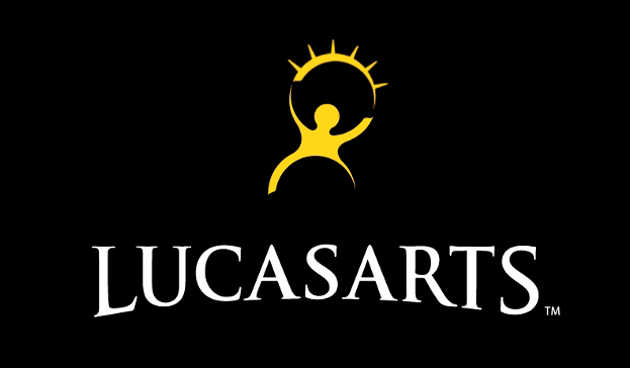
With an exceedingly large catalog of games the studio has either created or published, LucasArts will always be thought of as one of the most prolific games companies ever to grace the industry. We here at inMotion Gaming would like to wish the laid-off staff the very best of luck, and we hope they’re able to find new homes throughout the gaming world.
Written by
The inMotion Gaming Team
PS: If you enjoyed this article, help spread the word by clicking the “Like”, “Tweet”, “+1” buttons, or sharing it using the share icons below. Want to read more articles like this? Subscribe to iMG, and get our articles and reviews directly to your inbox or RSS reader.